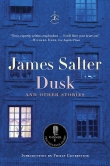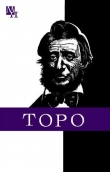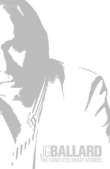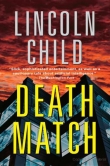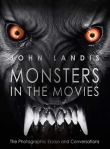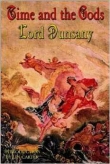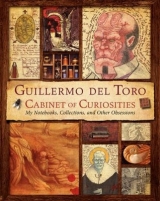
Текст книги "Cabinet of Curiosities: My Notebooks, Collections, and Other Obsessions"
Автор книги: Guillermo del Toro
Соавторы: Marc Scott Zicree
Жанры:
Публицистика
,сообщить о нарушении
Текущая страница: 15 (всего у книги 17 страниц)
In a magic story, the flow is more important than the logic. Man invented monsters to explain the entire universe. Once man began to live in an organized way, with a “social contract,” an abyss was opened up between his instincts and his thoughts, and monsters started to REPRESENT another universe altogether: man’s inner universe. The pagan prefigures the social and offers us a glimpse of the deepest reaches of man’s soul, articulating a primordial, savage universe, populated by fauns and ogres and fairies
“The man with the city in his mind.” 11/1/06
MY DAYS WITH DEL TORO
MIKE MIGNOLA

An early sketch of Rasputin from del Toro’s third notebook, Page 10B.
I’M A LUCKY BOY. I first worked with del Toro on Blade II, sometime in late 2000. We’d met a few years earlier when he was first trying to get Hellboy up and running. We’d stayed in touch while he took all kinds of meetings—meetings he kept me out of because (as he told me later) I would not have survived them. He was almost certainly right. Anyway, when it became clear that this Hellboy thing was going to be a hard sell, he took on Blade II and brought me along. I’m pretty sure this was mostly to see if we could work together, on the off chance that Hellboy would actually happen. It certainly was not because I knew anything about being a preproduction artist. Though I served no real function (my title was “Visual Consultant”), he brought me with him to Prague to scout locations. It’s that trip that I’ll always remember: discovering the wilds of eastern Europe together for the first time; wandering through endless ruined (and yet somehow still functioning) factories; wondering if (or when) our very scary driver was going to pull over into the woods and shoot us; hunting for a really good Kafka puppet (I still maintain that he should be wearing a hat); descending into the Prague sewers (which we discovered are coated in semi-transparent living goo); and just laughing like crazy about a whole lot of stuff I can’t repeat here.
The less said about the actual design work I did on that film, the better. Although del Toro and I like a lot of the same things (art, books, movies, etc.), when it comes to design I am sort of a minimalist, a “less is more” guy. He is very much a “more is not enough” guy. Often I would start a design and then he would hand it over to one of the other designers (usually my genius officemate, TyRuben Ellingson) to add a whole lot of stuff that would light up and spin around. The running joke was that if you could get steam to spurt out of the thing (whatever it might be), del Toro would really like it. The great artifact I have from that time (along with a bug-eyed, green vampire puppet) is a particularly terrible drawing I did of an autopsy table. It was so pathetically simple that del Toro was actually at a loss for words. He gently took my pencil from me and drew in Elmo and Big Bird standing behind the table. The look on their Muppet faces spoke volumes. That was Blade II.
Of course, we did go on to work together on both Hellboy films. On those I got to be there from the beginning (Hellboy II literally started with the two of us sitting in a room having no idea what we were going to do), through preproduction (I contributed a bit more on these films), filming, postproduction, and all the strangeness that comes after. I not only got to have Guillermo del Toro adapt my comic book character to film (which in my world is pretty much like winning the lottery) but I got to watch him do it. It was an amazing experience. And if I never set foot in another production office or sit on another film set, it will be okay, because I’ve done it—and I got to do it with him.

NOTEBOOK 4, PAGE 31B
Floor is white ash
The Temple of the Angel of Death.
BIGGER!
Jupiter. Machine Vox Von K.
The pendulum of G.A.
–[?] bottles in the eighteenth century
It was a handicraft similar to that of “ships in bottles” with scenes of daily life or religious motifs.
–Law Hand. Trained to write legal documents.
–UNUS MUNDUS. A unitary world (everything is everything).
–Every day is an opportunity to affect the world—
–The human species can he divided into two types: “the tragic man” (introverted) and “the conqueror man” (extroverted). Socially, each one has tools to ensure the continuity of his own type and survive. MARTYR/TYRANT
–“There’s nothing good or bad but thinking makes it so” Hamlet.
VFX-BOOTS, BAGS, TRAINING, WARP GEARS, PROPS, JACKET. ROOF in the LOCKER ROOM
–
Pigeons or crows in the meeting—
–
–In April Navarro will pass through London. We talked about scouting in Ireland for the final scene
Gas comes out of J
 GDT: Here [above], you can see Johann emptying himself, literally, on the floor of the locker room, next to a photo I bought of a dead baby. I bought a bunch of old photos in Budapest, and one of them was a dead baby. And it was really, really disturbing.
GDT: Here [above], you can see Johann emptying himself, literally, on the floor of the locker room, next to a photo I bought of a dead baby. I bought a bunch of old photos in Budapest, and one of them was a dead baby. And it was really, really disturbing.
Also on this page is the entrance to the Angel of Death’s place, a detail of a mechanism of the Golden Army, and on the bottom right is a mechanical voice box created by Baron von Kempelen, who created the Turk, the mechanical chess player. There was an exhibition of his machines in Budapest, including a reproduction of the Turk.
The device was meant to reproduce the human larynx, and I just made a sketch of it. I don’t take pictures. I don’t think I’ve taken more than two dozen pictures in my entire life. I don’t like still cameras. If something is very important, I’d rather sketch it.

NOTEBOOK 4, PAGE 39A
For the TROLL MARKET, vertical light sources in the middle, in 1:85 high resolution, for example with the Striders passing by there.
–I must make LHOD now. It’s time. But with Bardem in Argentina.
–WORMS. In the excrement of certain urban pigeons there can be found a particularly pernicious type of worm. It deposits its larvae/ eggs subcutaneously and has a special predilection for the tissues of the eye.
Mechanism for the fight.
–Agent Krauss—Yes, I read about him” Abe says, “in a book related to ectoplasmic activities—late nineteenth century—” HB: “go on” “He suffered a dramatic—” Manning: “Oh—he’s here…”
–Slipping on the floor on water and soap.
–With the idea of the old-fashioned TAPEWORM. A boy is walking around downtown and a pigeon shits on him. That night, in a five star hotel, the boy wakes up screaming. The parasites have already devoured his right eye.
Yellow fuzz.
–Design for Fragglewump UROE!!
 GDT: It took us the longest time to come up with the design for the gears in the palace [opposite]. We fought with everyone, and finally I came up with this layout, which Francisco Ruiz Velasco made better, and which is the one that is in the movie. It was very difficult to design that set, the idea being that the whole chamber was like a windup mechanism for the armor. You started these big gears, and then they started more stuff.
GDT: It took us the longest time to come up with the design for the gears in the palace [opposite]. We fought with everyone, and finally I came up with this layout, which Francisco Ruiz Velasco made better, and which is the one that is in the movie. It was very difficult to design that set, the idea being that the whole chamber was like a windup mechanism for the armor. You started these big gears, and then they started more stuff.

Del Toro’s idea for the giant gears that set the Golden Army in motion was refined into the design for a real working mechanism before being built as a set, here pictured with Johann (John Alexander), Abe Sapien (Doug Jones), Hellboy (Ron Perlman), and Liz (Selma Blair) in the foreground (ABOVE).

NOTEBOOK 4, PAGE 28A
–MUD and gauze for the “extras” in the J.M.—
–Mar/4/2007 A strange thought: the Academy ballots were turned in on the 20th (I went to television station) and were counted over the course of the next few days. In other words, the 20th is ahead. I, PC, W, and AW had already “lost” and it didn’t matter at all. Once the statistics have been made manifest they do not matter. I’m surprised that I am so calm.
GIANT
–Chihuahua WITH COLLAR—at the auction.
–and then they find the hones that have been gnawed on.
BANNERS F/TH
Two headed shop owner. He hand puppets the 2nd head.
Rusty duct and lots of tubes in cement
Vapor type
Fluorescent Light Tubes which blink on and off in the T.M./steam.
Papers on the walls, put —everything along the way.
Hellboy B.P.R.D.
–Blood on the floor of the entryway to the Troll Market

 MSZ: And on this page, are these sketches to the right initial concepts for the giant?
MSZ: And on this page, are these sketches to the right initial concepts for the giant?
GDT: Only the one in the little vignette. Wayne Barlowe really created the design for the giant. I wanted very much the center of the door to look like a keyhole—I have a thing with keys and keyholes, visually. I’m sure Freud would have no problem explaining that, but it’s something I go to a lot. It’s in Devil’s Backbone, and it’s in Pan’s Labyrinth, and it’s in Crimson Peak. I just like the idea of portals, doors, and keyholes.
The image to the right of the giant is actually a ghost for Crimson Peak. See the two initials at the bottom—“CP?” I sometimes put little initials next to each image to remind me which film it is for. So the image of the giant has an “H” next to it, which is Hellboy II. And “F” means I wanted to find an alternative use for an idea if I didn’t get to use it in a film. I drew the other “H” image—the pattern of pipes—here for the BPRD. But those actually show up in the Troll Market, in the scene where Wink beats up Hellboy.
MSZ: Next to it are some Lovecraftian symbols, kind of like the ones you drew in the first Hellboy notebook. Except here they’re contained within a frame.
GDT: That is troll writing for the map shop. I think it’s one of my favorite sets, because it had every sort of paper—all sorts of maps and atlases—covered in troll writing.

Del Toro’s idea for the threshold giant was developed by Wayne Barlowe into a finished concept that informed the final computer-generated creation.
PACIFIC RIM

Sketch of a door to a Jaeger Conn-pod from del Toro’s fifth notebook.

Concept of Gipsy Danger, the heroic American Jaeger, by Oscar Chichoni.

Storyboard of the Kaiju Knifehead attacking Gipsy Danger by Rob McCallum.

Concept of the Kaiju skull temple in Pacific Rim’s futuristic Hong Kong by Doug Williams.

Concept of Mako Mori on the Shatterdome ramparts by Keith Thompson.
AS GUILLERMO GAINS GREATER FAME and scrutiny, and as security on the tentpole films he crafts becomes ever greater, the notebooks have become a two-edged sword. They are valued as works of art in themselves, but could also become liabilities by revealing great secrets if lost or stolen. In addition, these pages reflect not only the changing nature of Guillermo’s life and art, but also the changing relationship between him and his audience. He is no longer a fledgling unknown clamoring for attention but a celebrity operating in public view.
Even today, Guillermo is reluctant to acknowledge his widespread popularity and vast influence. “I’m still not on the world stage. There are people who care for me. Still, the large majority of people don’t know who I am. I’m not a household name; I’m an acquired taste.”
Genuine modesty aside, Guillermo has learned the need for ever-greater caution regarding the notebooks. He must constantly be mindful of them. He became sharply aware of this on The Hobbit (2012); he was originally scheduled to direct the film series, and on the first film he shares cowriting credit. “The problem with the notebooks is, there was a very fractured relationship with them during The Hobbit. I kept a lot of notes, but I was very paranoid of them being lost because that was a supersecret project. To this day I’m very paranoid about that book, which is not finished; I’m still writing in it. So I pull it out less often because if it gets lost, if I reveal anything that’s stayed in the movies, it’s legally very, very binding.”
Once Guillermo was on board as The Hobbit’s director, financial difficulties with MGM led to the film’s delay. After two years cooling his heels in New Zealand waiting for production to begin, Guillermo ultimately left the project, intent on making up lost time and getting back to work.
Back in the United States, Guillermo met with James Cameron, who asked him if he was still interested in making a film of H. P. Lovecraft’s novel At the Mountains of Madness—because, if so, Cameron wanted to produce it.
Guillermo had been making notes—and notebook entries—on Mountains of Madness for more than fifteen years, and with Cameron fresh off the billion-dollar-plus success of Avatar, it seemed at last the stars would align to bring Guillermo’s most avidly desired project to fruition. Tom Cruise and Ron Perlman were cast in lead roles, and many months of intense preparation began, including astonishing creature designs, breathtaking production artwork, detailed storyboards of the entire film, location scouting, and more.
Then, at the last moment, the studio pulled the plug. No R-rated, two-hundred-million-dollar film had ever been greenlit to production, and the studio feared that the movie wouldn’t turn a profit without the child and teen audience. Heartbroken, Guillermo leapt into another film he’d been developing with Legendary Pictures, Pacific Rim—the ultimate giant monster-versus-giant robot movie.
“I think I’ve been preparing for Pacific Rim all my life,” Guillermo says. “When I was a kid, I saw The War of the Gargantuas in a shitty theater in Mexico, and I got a glass of pee thrown on my head from the balcony, and I stayed to finish the movie. That’s how much I love kaijus, you know?”
Pacific Rim was the perfect remedy for all the emotional and psychic wounds Guillermo had suffered while trying to make The Hobbit and At the Mountains of Madness—then emerging without a picture to shoot after four years. As he puts it, “Pacific Rim has been the best experience for me in producing and directing a movie that I’ve ever had.”
Best of all, this big summer movie embraces many of Guillermo’s favorite themes and motifs: the balancing act between the forces of chaos and order, darkness and light, human and mechanism entwined, duking it out with gigantic weird creatures from another dimension—much like H. P. Lovecraft’s Old Ones.
Filled with new creative fervor, Guillermo returned to working out designs and ideas in his notebooks. “Pacific Rim has a number of pages, which means a lot,” he relates. “If I have more than two pages on a movie, that means I’ve been at it for a long time because I don’t write that often in the book anymore.”
He hasn’t written in the notebook since completing Pacific Rim, but he adds, “Now that I’m doing [the TV version of] The Strain and Crimson Peak, I may restart. But I really want to finish this volume, so I can put it in a safe place, and I can start carrying a new notebook again. Once I’m not working on a supersecret project, I’ll be relaxed.”
What of the future? For a writer-director with such dark visions, Guillermo’s outlook is enduringly hopeful. Paraphrasing science fiction legend Theodore Sturgeon, one of his favorite writers, Guillermo observes, “There’s the famous Sturgeon’s Law, which is, ‘Ninety percent of everything is shit.’ Now the way I live my life is the del Toro Law, which is, ‘Ten percent of everything is awesome.’ You know what I’m saying? I agree with Sturgeon, except I think that it’s amazing that we get ten percent.
“All I know is that hatred makes life so much shorter and bitter. And every time you can give love, give love, if you can—and you can’t all the time, I mean I’m not a candy-ass Teletubby, I’m a human being, you know. I hate people and I love people. But whenever you can, just fucking love. If you can choose, choose love.”

Kaiju concept by Guy Davis.

Concept of Stacker Pentecost in his office in the Shatterdome by Vicki Pui.

Film teaser poster art by Hugo Martin.

Mako Mori (Mana Ashida) is rescued by the Jaeger Coyote Tango.

Sketch of the Chinese Jaeger Crimson Typhoon by Francisco Ruiz Velasco.

Concept of a Precursor by Keith Thompson.

Concept of the Kaiju Knifehead by Wayne Barlowe.

Del Toro applying some more patina to the Alaskan wall set during shooting.

NOTEBOOK 5, PAGE 7
–Ultra Primes (T1.9) 14, 16, 20, 24, 28, 32, 40, 50, 65, 85, 100, 135, 160 mm for each unit Macro Primes (T21) 16, 24, 40 mm, VariablePrimes (T2.2) 16–30 mm 29–60 mm, 55–105 mm zooms 15–40 mm, 28–76 mm, 17–80 mm 24, 290 mm, each unit.
–Cold colors in the Tokyo FB except for the shoe in Mako’s hand.
–Rain of slow, gray ash
–On the battlefield everything is blood and mud. The strongest lines are the horizontal ones and in the forest and the castle the most powerful lines are vertical. The cannons destroy the forest when they try unsuccessfully to halt the advance of the enemy troops.
–The confusion interrupts the battle, putting both armies in a constant state of alert, sensitive to the slightest sound.
“Mako on the stairs”
–Use the clock of war to mark time with news in last third of the film.
–“Don’t let your feet touch the ground” by Ash Koley.
–The Beast was afraid of becoming vulnerable. He isolated himself from the world, poring over his books and maps.

NOTEBOOK 5, PAGE 10
–When is the right time to say good-bye? How can we know if we’re unaware of the host’s identity? How to know if we are midway through the meal or if it has already come to an end?
–I’m a father but I still feel like a son, I’m an adult but my fears are those of a child. I’m alone but I live among many, I feel like time is running out when everything is just getting started
–The dark fairy hated the prince because she loved him with a passion.
–Always say what you think, always do what you say, and know what makes you happy. Live or die abiding by firmly made decisions, doing what you think is the right thing.
Mako in the rain, sans helicopter

Del Toro’s notebook sketch of Mako Mori’s first appearance, alone in the rain, inspired costume designer Kate Hawley.
 MSZ: So Pacific Rim is part of a new notebook, which includes notes you made while working on The Hobbit, correct?
MSZ: So Pacific Rim is part of a new notebook, which includes notes you made while working on The Hobbit, correct?
GDT: Well, what happened is, I lost a lot of the rhythm of working in the notebooks during The Hobbit, because I was so afraid—I’m still afraid—of carrying that notebook. I used to grab my notebook and travel with it everywhere and make annotations, but with The Hobbit, secrecy was so paramount I was paranoid about leaving it behind in a coffee shop. So I stopped carrying it. And to this day, I have it at home, but until I finish that notebook, I cannot carry a notebook, because the three movies haven’t come out yet.
MSZ: How did you get back into working in the notebooks for Pacific Rim?
GDT: I was really, really invested in this image of the girl with the red shoe [opposite]. Because it’s something that I felt was very iconic, and it defined the entire palette of the movie for me. The movie is incredibly saturated with color, but I wanted Mako’s flashback to have few colors and feel almost monochromatic. Blue is dominant in her memories and it permeates her in the present—her hair is streaked with that blue. She is marred by the past. I also wanted her introduction scene [above] to be monochromatic and we art directed that whole introductory sequence in the rain to be only concrete gray, cyan, and gold. So the two sequences are linked.
But once Mako and Raleigh connect, more colors begin to be associated with them. The first Drift they do is all in blue. After that, when they are fighting in Hong Kong, all these colors start coming in, and we end up with them immersed in a sea of red. And the red is the same red as the red of her shoe.
I think that if you’re going to go crazy with colors in a movie like we do in Pacific Rim, you have to have peaks and valleys; you have to have places where the eye can rest. And so we have that regular red, for when Raleigh and Mako connect. And then when they are not connecting, or when they are alone, they each have another color. Mako’s palette is cold, while Raleigh’s color code for when he is by himself is rust and grime and amber.

NOTEBOOK 5, PAGE 9
–The world is rapidly becoming a more and more vile place that celebrates vulgarity and brutality in the abstract but that hypocritically demands absolute moral perfection in public
–Sooner than you might think, with noise comes emptiness. The explosion occurs when emptiness trumps substance
–How pleasant is the sensation of absence. What a pleasing assassin is silence
–Absolute inconsequence, empty gestures, distance. To be so close and yet so distant from others; to fade away without thunder, without a roar and without fury. Without a vessel, without meaning, without a clear direction; without a destiny, finding nothing but echoes in the voices of other people.
–To which one of the voices should we pay attention? To the one that says “keep going, keep going”? To the one that speaks of tedium? What is the purpose of the gears? Entropy overcomes and guides us as we lurch along toward our cosmic destiny; perhaps, the most we can do is end our days as tiny discharges of energy. Positive, negative? What difference does it make? Murals made by ants, crushed under the feet of a man trudging along, part of an incomprehensible, indecipherable cosmic joke.

NOTEBOOK 5, PAGE 5
The code in the Kaiju’s viscera should he fascinating. Blues, iridescence; translucent and opalescent. Bioluminescent blood should come from the glow sticks; this would help with the FX brain
–Before the written language in Cluva events were recorded by knotting cords or making notches on a stick (SINOGRAMS is what the symbols are called) 6 categories. XIANGXING, ZHISHI, HUIYI, XIESHENG, ZUANZAU, and JIAJIE —PICTOGRAMS.
–Wide-angle lenses to capture the CHARACTER and the SURROUNDINGS in the same frame 18 mm
–For Beauty and the Beast, the Age of Reason, which is the period during the eighteenth century in which reason is enthroned above spirituality, which witnesses the birth of Diderot’s Encyclopedia. It’s in this spirit that the United States is born as a new country.
–Perhaps it might also be worthwhile to set it in the following period: during the Napoleonic Wars, when reason has been abandoned but spirituality has not been recovered or reclaimed.
–BOXING FIST FIGHT in the middle of a battlefield in F.
–Gathering pages from her encyclopedia Bella finds something ancient and magic.
“Sprouting Boy”
 MSZ: What can you say about the flower here [opposite]? Does it resonate at all with the flower in Pan’s Labyrinth?
MSZ: What can you say about the flower here [opposite]? Does it resonate at all with the flower in Pan’s Labyrinth?
GDT: The idea in both films is that the flower tells the story. But I abandoned the idea in the middle of shooting Pacific Rim because I thought we wouldn’t have time. When we started shooting, the screenplay was about 130 pages long. That meant at least a 2-hour-and-45-minute movie for me.
But the idea was that the entire command center would be made of concrete and metal. And I wanted Raleigh and Mako to talk about themselves to one another, in the heart of the rubble. Originally, they were going to talk on a ledge outside, and she would notice a flower that was blooming in the concrete and she would say, “Oh, the poor thing, it won’t live.” And then, at the end of the movie, we would go back to the flower, and it would be blooming.
MSZ: It looks like there is an image of the rubble on the facing page. Can you say something about that?
GDT: I love finding beauty and symmetry in ruins, and I thought this crumbling half-pipe could look almost like a throne. I also used a circle for the throne in Hellboy II, which I think has a certain inherent magnificence. I wanted both scenes to feel operatic, if you will.
MSZ: And does the symbol on this page mean anything?
GDT: I wanted a symbol for the Kaiju organ harvester, Hannibal Chau, and I wanted it to look sort of like an Oriental character, even though it’s just his initials. So that’s an “H” and a “C.”

Del Toro had a clear idea early on that a broken, massive circular opening could serve as a symbolic throne for his reluctant hero Raleigh Beckett (Charlie Hunnam).

NOTEBOOK 5, PAGE 4
–Use very wide-angle lenses for the film. The scale of the action is not human, taking place at a height of 25 stories. Wide-angle lenses will he of great use in the struggle to get humans and Jaegers into the same frame. Ask Memo which set of lenses comes with the Epia.
–Make sure that the Scavengers’ biosuits aren’t too sci-fi.
–Colors in Raleigh’s apartment with his clothes. (?) Speak with K.
–Divide the Shatterdome “intro” into 4 different areas, offering a clear sense of the geography. The center of this geography is the main portal through which the Jaegers emerge into the bay of H.R. On the other side is the Loccent.
–The Chernobog Alpha is finally destroyed when they crush the cabin that is its heart.
–Mako and Raleigh need to fall in love in a way that is believable. Their time together is short. Their mutual gazes need to be intense right from the start. Mako is stunned by Raleigh’s apparent carelessness and he is attracted to her apparent orderliness. Together they form the perfect Ying Yang
“Elegant Scavenger”





Del Toro drew on Renaissance dress codes and historic whaling gear to keep the Kaiju scavengers in the film low-tech. Concepts of the scavenger by Kate Hawley closely followed del Toro’s direction.
 MSZ: So you have a note here saying you didn’t want the scavengers to be too high-tech.
MSZ: So you have a note here saying you didn’t want the scavengers to be too high-tech.
GDT: I wanted them to be like seventeenth-century whalers. Their tools of the trade are blades and wicker baskets. Everything about them is a little funky—like steam-powered or clunky. So they are really, really low-tech. Even the robots and the control mechanisms in Pacific Rim have an analog component, which for me is very important.
MSZ: And the Kaiju here?
GDT: I wanted to evoke a whale. It was going to open and have another head inside. But it ended up looking like a crocodile—Francisco Ruiz Velasco took it in a completely different direction.
MSZ: And what about the note, “Kaiju cutie?” You’ve discussed the idea of giving monsters personalities, making them somehow sympathetic.
GDT: I just thought he looked cute, you know? But I love all the Kaiju in Pacific Rim. My favorite is Leatherback, the gorilla-like one. I voiced three Kaijus in the movie, and Leatherback is the one I voiced most. Every time he moves, I’m complaining about weight. Like, I was actually saying the words, but then we distorted the sounds. I was going, “Oh, I’ve got to lose weight. Oh, I’m so heavy. I shouldn’t have eaten that last pilot.” I don’t know how much of that is in the final mix, but when I was doing the sounds, I was complaining actively and thinking, This guy really hates being out of the water, because that happens to me when I get out of a pool. I go, “Shit, I’m heavy!”

NOTEBOOK 5, PAGE 3
“KAIJU CUTIE”—
–Walls are built out of fear. They not only protect but also shut in. The leopard looks at the man from outside
–The color palette of the costumes and sets (except HK) should be very lightly saturated with grays, faded blues and shadowy blacks and ochres to respond to a pattern of VERY saturated lighting that can give the film epic stature and the feel of an adventure movie with super-saturated colors
“sensei in white suit.”
–color transition between the two “suiting” rooms in the film.
RED/WHITE
–héng-
–The scavengers are the whalers of the twenty-first century—
“scavenger”
 MSZ: And what is the difference between the elegant scavenger and the regular scavenger you’ve drawn here?
MSZ: And what is the difference between the elegant scavenger and the regular scavenger you’ve drawn here?
GDT: Well the elegant scavenger is sort of like the head of the scavengers. In the Renaissance, you indicated your status by how much fabric you wore. The more fabric you wasted, the higher your status. So if you look at Tudor clothes, there’s layer upon layer upon layer. And I like the idea of the elegant scavenger having four or five layers to his mask and his clothing using a lot of fabric.

NOTEBOOK 5, PAGE 8
Sept. 9, 2011 A TERRIBLE DAY due to movement in the foot of the p.
–“Is there anyone else here with us…” she asks after having seen the prince in the palace garden in the moonlight. Eventually she finds the abandoned pelt.
–“You may wish for whatever you want, and it will be yours.” There is no limit to Beauty’s desires, the Beast has only one
–“Love him who loves you” the prince advises
–Soldiers who are RETURNING from war or GOING to war
–She finds the painting of the prince as a human.
–The Beast carves puppets and automatons. He puts on a show for her.
–Birds and monkeys—
–Gargoyles and chimney—
–The furniture moves.
–Discuss the Beast’s pelt.
–He gives her two magic rings.
–He gives her the entire key chain and warns her never to open the door to one room in particular which is locked every night and in which he leaves his abandoned pelt before going to the garden to speak with the fairy which cast a spell on him
–The specter of War needs to hover in the evil atmosphere of Beauty’s village
–The castle exists in the center of a labyrinth of trees

Del Toro wanted to invent motivational propaganda for the film’s war against alien invaders. Keith Thompson’s poster design, infused with Russian Futurist motifs, followed del Toro’s original direction but was eventually abandoned in favor of a different approach.
 MSZ: So this poster [opposite] is an odd blend of monster movies, Russian Futurism, wartime propaganda. What was your thinking here?
MSZ: So this poster [opposite] is an odd blend of monster movies, Russian Futurism, wartime propaganda. What was your thinking here?
GDT: I like Soviet and Eastern European propaganda that is very graphic. And for Pacific Rim, we decided to explore a lot of World War II references since we wanted to convey the nobility of the wartime effort in the film. So we designed bomber nose art, uniforms, and propaganda posters, although we didn’t use this one [above] in the end.

